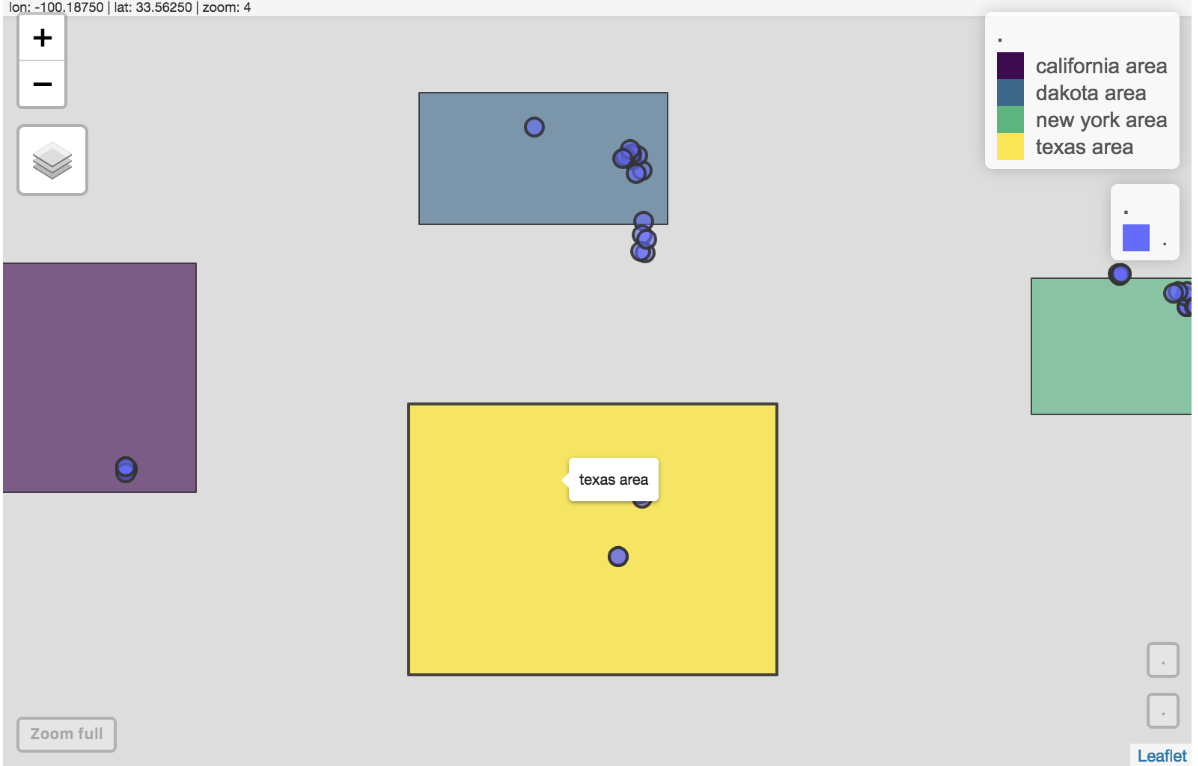GeoSpark: Bring sf to spark
Introduction & Philosophy
Goal: make traditional GISer handle geospatial big data easier.
The origin idea comes from Uber, which proposed a ESRI Hive UDF + Presto solution to solve large-scale geospatial data processing problem with spatial index in production.
However, The Uber solution is not open source yet and Presto is not popular than Spark.
In that, geospark R package aims at bringing local sf functions to distributed spark mode with GeoSpark scala package.
Currently, geospark support the most of important sf functions in spark,
here is a summary
comparison. And the geospark R package is keeping close with geospatial and big data community, which powered by sparklyr, sf, dplyr and dbplyr.
Installation
This package requires Apache Spark 3.X which you can install using
sparklyr::install_spark("3.0"), and previous spark version like spark2.X is no longer officially maintain. in addition, you can install
geospark as follows:
pak::pkg_install("harryprince/geospark")Getting Started
In this example we will join spatial data using quadrad tree indexing.
First, we will initialize the geospark extension and connect to Spark
using sparklyr:
library(sparklyr)
library(geospark)
sc <- spark_connect(master = "local")
register_gis(sc)Next we will load some spatial dataset containing as polygons and points.
polygons <- read.table(system.file(package="geospark","examples/polygons.txt"), sep="|", col.names=c("area","geom"))
points <- read.table(system.file(package="geospark","examples/points.txt"), sep="|", col.names=c("city","state","geom"))
polygons_wkt <- copy_to(sc, polygons)
points_wkt <- copy_to(sc, points)And we can quickly visulize the dataset by mapview and sf.
M1 = polygons %>%
sf::st_as_sf(wkt="geom") %>% mapview::mapview()
M2 = points %>%
sf::st_as_sf(wkt="geom") %>% mapview::mapview()
M1+M2
The SQL Mode
Now we can perform a GeoSpatial join using the st_contains which
converts wkt into geometry object. To get the original data from wkt
format, we will use the st_geomfromwkt functions. We can execute this
spatial query using DBI:
DBI::dbGetQuery(sc, "
SELECT area, state, count(*) cnt FROM
(SELECT area, ST_GeomFromWKT(polygons.geom) as y FROM polygons) polygons
INNER JOIN
(SELECT ST_GeomFromWKT (points.geom) as x, state, city FROM points) points
WHERE ST_Contains(polygons.y,points.x) GROUP BY area, state") area state cnt
1 texas area TX 10
2 dakota area SD 1
3 dakota area ND 10
4 california area CA 10
5 new york area NY 9
The Tidyverse Mode
You can also perform this query using dplyr as follows:
library(dplyr)
polygons_wkt <- mutate(polygons_wkt, y = st_geomfromwkt(geom))
points_wkt <- mutate(points_wkt, x = st_geomfromwkt(geom))
sc_res <- inner_join(polygons_wkt,
points_wkt,
sql_on = sql("st_contains(y,x)")) %>%
group_by(area, state) %>%
summarise(cnt = n())
sc_res %>%
head()# Source: spark<?> [?? x 3]
# Groups: area
area state cnt
<chr> <chr> <dbl>
1 texas area TX 10
2 dakota area SD 1
3 dakota area ND 10
4 california area CA 10
5 new york area NY 9
The final result can be present by leaflet.
Idx_df = collect(sc_res) %>%
right_join(polygons,by = (c("area"="area"))) %>%
sf::st_as_sf(wkt="geom")
Idx_df %>%
leaflet::leaflet() %>%
leaflet::addTiles() %>%
leaflet::addPolygons(popup = ~as.character(cnt),color=~colormap::colormap_pal()(cnt))
Finally, we can disconnect:
spark_disconnect_all()Performance
Configuration
To improve performance, it is recommended to use the KryoSerializer
and the GeoSparkKryoRegistrator before connecting as follows:
conf <- spark_config()
conf$spark.serializer <- "org.apache.spark.serializer.KryoSerializer"
conf$spark.kryo.registrator <- "org.datasyslab.geospark.serde.GeoSparkKryoRegistrator"Benchmarks
This performance comparison is an extract from the original GeoSpark: A Cluster Computing Framework for Processing Spatial Data paper:
| No. | test case | the number of records |
|---|---|---|
| 1 | SELECT IDCODE FROM zhenlongxiang WHERE ST_Disjoint(geom,ST_GeomFromText(‘POLYGON((517000 1520000,619000 1520000,619000 2530000,517000 2530000,517000 1520000))’)); | 85,236 rows |
| 2 | SELECT fid FROM cyclonepoint WHERE ST_Disjoint(geom,ST_GeomFromText(‘POLYGON((90 3,170 3,170 55,90 55,90 3))’,4326)) | 60,591 rows |
Query performance(ms),
| No. | PostGIS/PostgreSQL | GeoSpark SQL | ESRI Spatial Framework for Hadoop |
|---|---|---|---|
| 1 | 9631 | 480 | 40,784 |
| 2 | 110872 | 394 | 64,217 |
According to this paper, the Geospark SQL definitely outperforms PG and ESRI UDF under a very large data set.
If you are wondering how the spatial index accelerate the query process, here is a good Uber example: Unwinding Uber’s Most Efficient Service and the Chinese translation version
Functions
Constructor
| name | desc |
|---|---|
ST_GeomFromWKT |
Construct a Geometry from Wkt. |
ST_GeomFromWKB |
Construct a Geometry from Wkb. |
ST_GeomFromGeoJSON |
Construct a Geometry from GeoJSON. |
ST_Point |
Construct a Point from X and Y. |
ST_PointFromText |
Construct a Point from Text, delimited by Delimiter. |
ST_PolygonFromText |
Construct a Polygon from Text, delimited by Delimiter. |
ST_LineStringFromText |
Construct a LineString from Text, delimited by Delimiter. |
ST_PolygonFromEnvelope |
Construct a Polygon from MinX, MinY, MaxX, MaxY. |
Geometry Measurement
| name | desc |
|---|---|
ST_Length |
Return the perimeter of A |
ST_Area |
Return the area of A |
ST_Distance |
Return the Euclidean distance between A and B |
Spatial Join
| name | desc |
|---|---|
ST_Contains |
|
ST_Intersects |
|
ST_Within |
|
ST_Equals |
|
ST_Crosses |
|
ST_Touches |
|
ST_Overlaps |
Distance join
ST_Distance:
Spark GIS SQL mode example:
SELECT *
FROM pointdf1, pointdf2
WHERE ST_Distance(pointdf1.pointshape1,pointdf2.pointshape2) <= 2
Tidyverse style example:
st_join(x = pointdf1,
y = pointdf2,
join = sql("ST_Distance(pointshape1, pointshape2) <= 2"))
Aggregation
| name | desc |
|---|---|
ST_Envelope_Aggr |
Return the entire envelope boundary of all geometries in A |
ST_Union_Aggr |
Return the polygon union of all polygons in A |
More Advacned Functions
| name | desc |
|---|---|
ST_ConvexHull |
Return the Convex Hull of polgyon A |
ST_Envelope |
Return the envelop boundary of A |
ST_Centroid |
Return the centroid point of A |
ST_Transform |
Transform the Spatial Reference System / Coordinate Reference System of A, from SourceCRS to TargetCRS |
ST_IsValid |
Test if a geometry is well formed |
ST_PrecisionReduce |
Reduce the decimals places in the coordinates of the geometry to the given number of decimal places. The last decimal place will be rounded. |
ST_IsSimple |
Test if geometry's only self-intersections are at boundary points. |
ST_Buffer |
Returns a geometry/geography that represents all points whose distance from this Geometry/geography is less than or equal to distance. |
ST_AsText |
Return the Well-Known Text string representation of a geometry |




